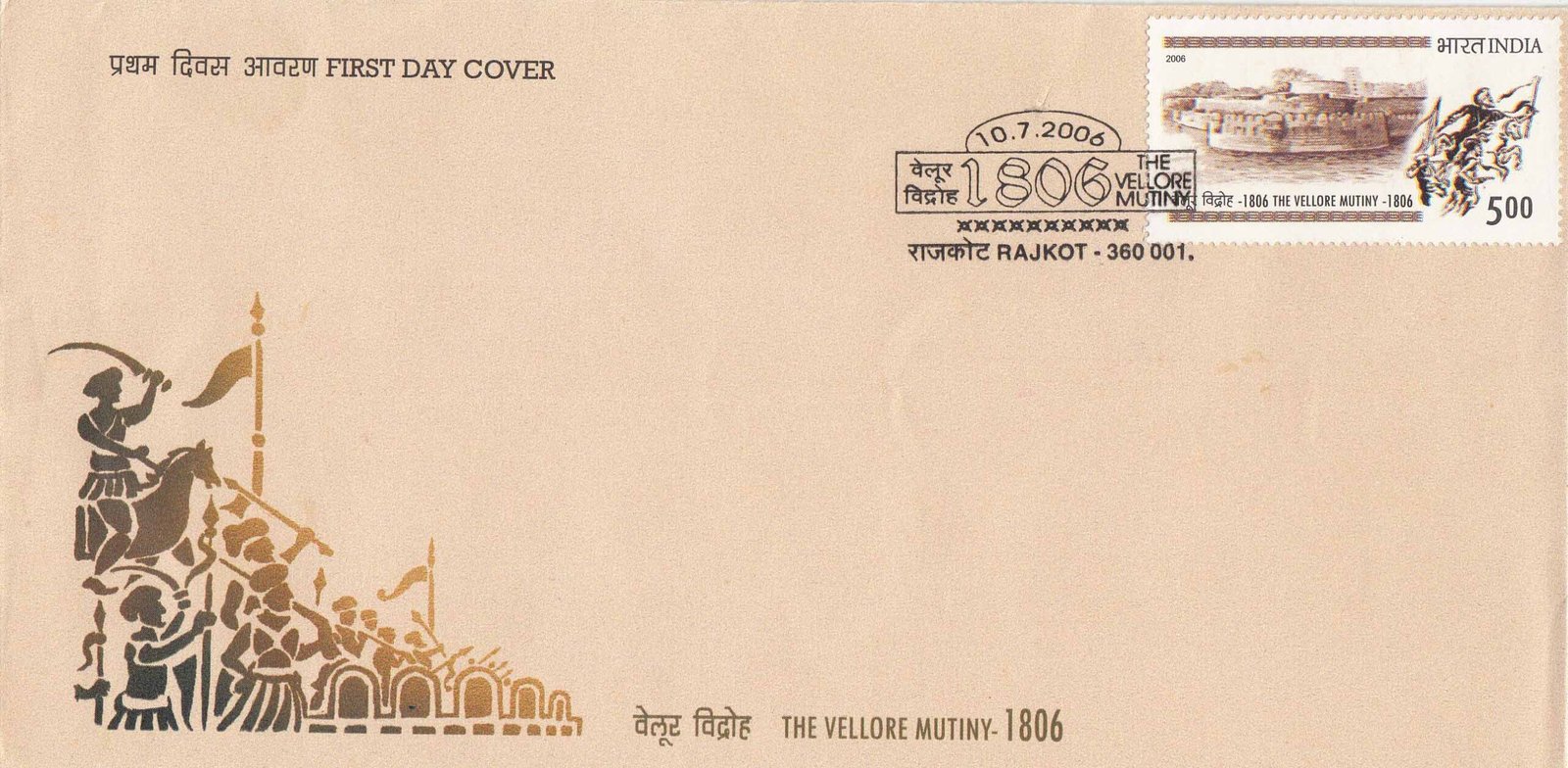The Vellore Mutiny 1806

Technical Data
| Stamp Set | Bicentenary of the Vellore Mutiny |
|---|---|
| Date of Issue | July 10, 2006 |
| Denomination | Rs. 5 |
| Quantity | 800,000 |
| Perforation | comb13¼ |
| Printer | India Security Press, Nasik |
| Printing Process | Wet Offset |
| Watermark | No Watermark |
| Colors | Multicolor |
| Credit (Designed By) | Sh. Sankha Samanta |
| Catalog Codes |
Michel IN 2148 Stamp Number IN 2159 Yvert et Tellier IN 1912 Stanley Gibbons IN 2334 WADP Numbering System - WNS IN028.2006 |
| Themes | Anniversaries and Jubilees | Fortresses / Strongholds | Uprising |
Seeking to expand their sphere of influence and control in India, the British maintained an army that, right up to 1857, was composed largely of Indians, or natives as they were called. Yet the British were strangely insensitive to the cultural and religious sensibilities of the Hindu and Muslim soldiers serving under them.
This was evident as early as in 1806 when the British introduced a new dress code for its army. Many of the new dress regulations ran counter to the religious beliefs and customs of the Indian soldiers, yet the British sought to enforce these most stringently, riding roughshod over any resistance, and dealing out severe punishments to the protestors.
In the meantime, following the defeat and death of Tipu Sultan in 1799, his family had been held captive at Vellore Fort, the strongest fort in the area. The British forces deployed there at the time comprised of some 1500 Indian and some 370 European soldiers.
Resentment against the British highhandedness in the matter of enforcing the army uniform regulations and the brutal reprisals against voicing of any protest found expression in an attempt by the Indian soldiers to prop up the Mysore royal family, which had fought the British so valiantly. Thus it was that on the morning of 10th July, 1806, the Indian soldiers at Vellore rose in revolt against the British, killing some army officers and taking control of the arms and ammunition. They hoisted the royal tiger flag of Tipu Sultan over Vellore Fort, pulling down the Union Jack of the British, and declared Tipu Sultan’s second son, Fateh Hyder, as king.
However, reinforcements from Ranipet, led by Colonel Gillespie, arrived within a few hours and the mutiny was suppressed by the British. It is said that over 800 soldiers were killed inside the fort and 17 Indian officers hanged outside it, by the British, while many more men were kept imprisoned in Vellore and Tiruchirapalli prisons following the revolt.
This spontaneous uprising of the Indian soldiers in Vellore Fort on 10th July 1806 was among the early manifestations of resistance to British rule in India.
First Day Cover


Leave a Comment
You must be logged in to post a comment.